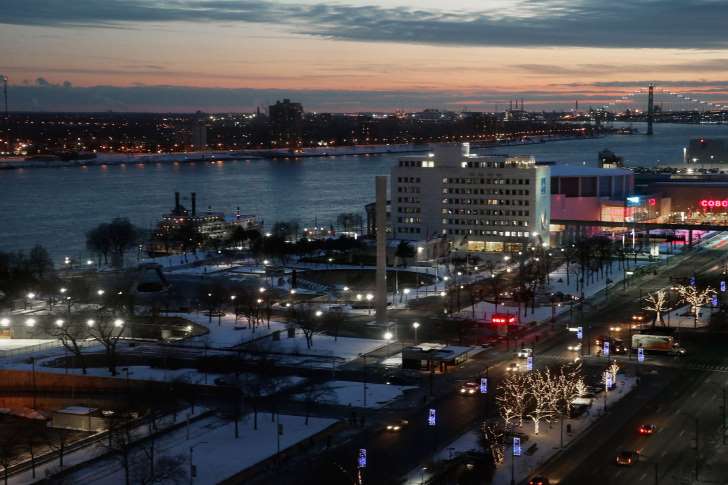March 9, 2016
WINDOR, CANADA – For years now, a low, rumbling hum has plagued the residents of Windsor, Ontario – just across the river from Detroit.

Background, March 2 in Detroit, Michigan. The Detroit River flows between the downtown area and Windsor, Canada
March 9, 2016
WINDOR, CANADA – For years now, a low, rumbling hum has plagued the residents of Windsor, Ontario – just across the river from Detroit.

Background, March 2 in Detroit, Michigan. The Detroit River flows between the downtown area and Windsor, Canada
Known as the "Windsor Hum," some say the mysterious noise is so intense that it's more easily felt than heard.
"It has been described as sounding like an idling locomotive, a transport truck and running refrigerator," the Canadian Broadcasting Corp. wrote in 2014. "People have complained about sleepless nights, rattling windows and headaches."
The sound has even been blamed for the death of a goldfish.
To make matters worse, experts say, the sound arrives without warning, at irregular intervals. It has baffled scientists, locals and politicians, who can't agree on the best way to investigate the matter.
Government studies in 2014 traced the sound to U.S. Steel Corp. operations on Zug Island, an industrial property in the city of River Rouge, Mich., which lies just south of Detroit, according to the National Post. Officials from the Canadian Department of Foreign Affairs and International Trade told the paper that they were unable to access the site – because it lies on the other side of an international border – and failed to pinpoint its source.
"It’s like chasing a ghost,” University of Windsor professor Colin Novak, who has investigated the sound, told the CBC.
The hum is often heard on the western and southern ends of Windsor and, for many, encountering the noise is a deeply unsettling experience. On a single night in 2012, more than 22,000 residents phoned into a town hall to discuss the noise and ask questions, such as how the noise might affect building foundations and whether it poses a threat to pregnant women, according to the Windsor Star.
“What happens if my foundation cracks because of this?” a caller named "Debbie" asked, according to the paper. “This is not just airborne. Something else is going on.”
The hum fades out periodically. But in recent weeks, residents report, it has returned with a vengeance.
“We had a big blowup on Saturday,” Mike Provost, a retiree who for years has kept track of the industrial noises assaulting his neighborhood, told the National Post. “It shook everything. The noise was horrendous. It’s like a pounding on the wall.” Provost – who has spent years lobbying government officials to take action – noted that the noise is loudest at around 8 p.m.
Researchers efforts to pinpoint the noise have led to mixed results, according to the CBC:
In February 2013, Novak and a group of fellow scientists and researchers from Windsor and London's Western University set up a state-of-the-art, $250,000 recording station in a woodlot in the western part of Windsor. It was a virtual ear, tuned to record the hum 24/7.Peter Brown of Western University was also part of the research team. The first report was "inconclusive," Watson said. The second determined Zug Island to be home to the hum.
City officials in River Rouge, Mich., where many believe the sound originates, told the Windsor Star in 2012 that there's another obstacle to investigating whether the sound actually emanates from their land: they can't afford to research the issue.
“We are not going to pay for something that is for somebody else’s benefit because this is not a problem affecting us,” David Bower, city attorney for River Rouge, told the paper in 2012.
“We just don’t have the money for something like this," he added. "I don’t personally know the source other than it’s coming from somewhere in the Zug Island area. I’m sure there is an industrial process which is the source, but it takes more than just walking around talking. There is a process to ascertain the source, but we don’t have the money."
“Somebody else will have to step up and pay.”
Four years later, residents like Provost – who finds the sound infuriating – are still under assault. He told the National Post that he'll continue to press government officials to resolve the noise pollution.
“But how do you stop a company from producing?” Provost asked the National Post. “They employ 1,800 people. You would hope they have some way to keep the noise down a bit so we can get some peace and quiet at night.”
Courtesy: Washington Post
















































































































